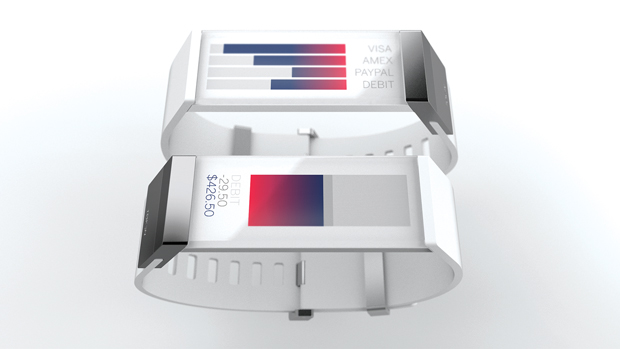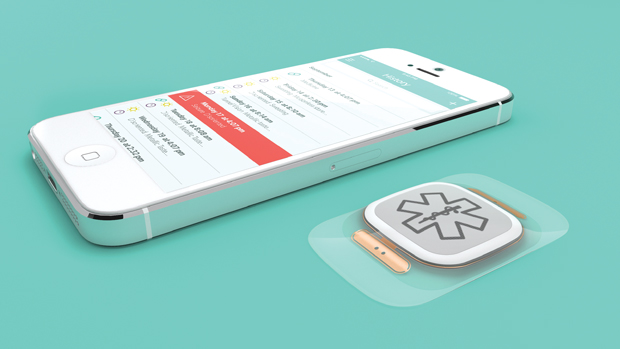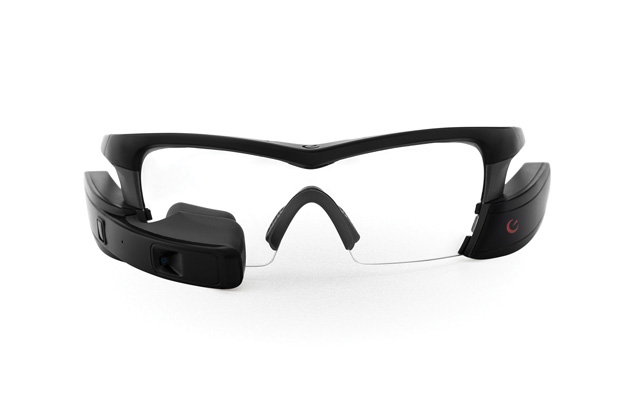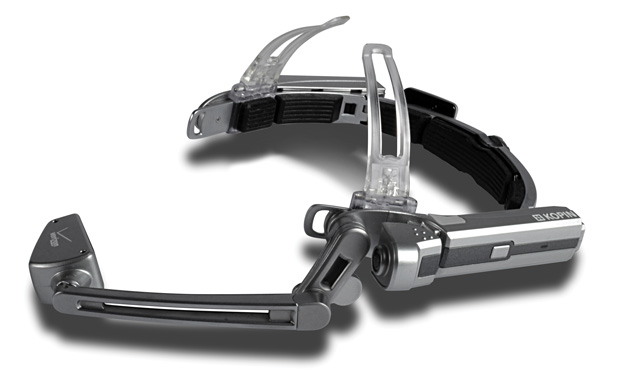
Artefact Token connects users to their bank accounts and credit cards so they can make purchases on the go. Image courtesy of Artefact.
September 1, 2015
 Artefact Token connects users to their bank accounts and credit cards so they can make purchases on the go. Image courtesy of Artefact.
Artefact Token connects users to their bank accounts and credit cards so they can make purchases on the go. Image courtesy of Artefact.Wearables, once only seen on the wrist of Dick Tracy or the worlds of “Star Trek,” are now part of peoples’ everyday reality, and sometimes their augmented reality. Consumers can track their daily fitness, get the weather or even text messages; all from a device that isn’t a smartphone. It’s often a watch, bracelet or even glasses. But while the technology is used every day, most consumers don’t consider the engineering aspects of a wearable once they put it on.
Consider the Wearable Facts
Designing a wearable device requires extensive research and development as well as data collection. The product must function well from both engineering and aesthetic viewpoints. This brings up additional concerns such as comfort, weight, usability and fashion. Ultimately, designers and engineers are tasked with making a product that will give consumers metrics and feedback, and also be something they’ll want to wear.
“Unlike technology products that we have in our homes, on our desks or in our pockets, wearables are much closer to us—both literally, on our bodies, as well as often emotionally, as they become an expression of our self. These fundamental differences—comfort, emotional connection and aesthetics—become key design considerations that we have to take into account and solve for when we design wearables,” says Markus Wierzoch, design director at Artefact. “One of our main challenges is to find the right balance between designing a product that is authentic to its technologic core while at the same time has the personality and aesthetics of the everyday items we are used to wearing.”
 Dialog from Artefact allows people with epilepsy to track seizures and helps determine potential stressors or triggers. Image courtesy of Artefact.
Dialog from Artefact allows people with epilepsy to track seizures and helps determine potential stressors or triggers. Image courtesy of Artefact.Additionally, engineers need to account for how many possible ways a consumer could interact with their wearable in a way that is easy to learn and intuitive. “Interfacing with the device is always a challenge. You want it to be as hands-free as possible, so buttons and things are not always [an optimal solution]. And voice control works well if you’re by yourself. There is noise-cancelling technology if you’re in public, but people are hearing what you’re saying. The psychology of that is [something to consider],” says David Moriconi, president of IDE Inc., a product design and development firm based in California.
With all these possibilities, it can help to hone in on a niche market, and consider what users in that specific marketplace would want. For instance, at Recon Instruments, a developer of smart eyewear, engineers decided they wanted to provide a product for cyclists and runners, says Ben McConnell, director of Product Management. This helped the team figure out what type of data to provide – such as pace, distance and workout duration – and focus on what hardware was necessary to gather that info.
Taking the “What If” Out of Design
So if you’re designing a wearable, how do you ensure a product is going to function, is comfortable for the wearer and has the aesthetic appeal crucial to a success? Iterative prototyping and real-world testing can account for ergonomics and aesthetics.
IDE has in-house CNC (computer numerically controlled) machines, high-precision 3D printers and more to create iterative prototypes quickly and visualize concepts such as look, fit and the human factor, Moriconi says. He also notes it’s helpful to realize that you can’t create a “one-size-fits-all” product, and to make sure that a product has some adjustability to fit multiple wearers.
“Normally on one end you have engineers who are designing transmission systems, and on the other hand you have an artist who is designing something that is appealing,” says Fabio Esposito, president at Solidscape. “What we have been able to do [at Solidscape] is link these two sides.”
For example, Solidscape helped MEMI, a smartbracelet developer, finalize its own design through the company’s wax 3D printers. To be fashionable, the bracelet incorporated thin walls and curved edges but still needed to house the necessary antennas. To optimize this design, the company used Solidscape’s printers to run through several iterations, lower costs and decrease time to market, says Esposito.
Playing Technology Catch-up
In addition to aesthetic and fit considerations, wearables are also seeing some challenges on the technology front. The rise of the Internet of Things (IoT) has brought a push for smaller form factor sensors and power sources. However, wearables such as smartwatches and smartglasses are still somewhat of a niche market, which can make accessibility to components limited.
At Recon Instruments, engineers used chipsets that were optimized for mobile phones when it started developing its Jet smart eyewear product about two years ago. While this helped them create a device that can provide data to athletes, engineers had to figure out how to integrate all the pieces.
 Recon Instruments consulted with eyewear experts and used mobile phone technology to create smart eyewear for athletes, such as runners and cyclists. Image courtesy of Recon Instruments
Recon Instruments consulted with eyewear experts and used mobile phone technology to create smart eyewear for athletes, such as runners and cyclists. Image courtesy of Recon Instruments“One challenge was shrinking [the technology] to as small as possible while using chips that were really targeted towards other markets and not necessarily wearables,” says McConnell. “So the goal becomes fitting these things into a small form factor, which takes some traditional engineering as well as some creative approaches to getting those things down onto a small board but also a bit of reinventing the wheel.”
But the availability of more wearable-specific components is growing, McConnell says. Companies such as Intel are conducting efforts to create smaller form factor chips that are more suited for wearables. At this year’s International Consumer Electronics Show, it released the Curie module, the first purpose built wearable system on chip (SoC). The module is equipped with 80KB of SRAM, a low-power integrated DSP sensor hub, pattern-matching technology and runs on a coin-sized battery. Intel is also investing more in the wearable market, and acquired Recon Instruments in June.
Synopsys, a provider of electronic design automation products and services, is helping wearable companies that are tasked with some of that reinvention.
“One of the keys is to reduce the voltage of those systems,” says Ron Lowman, strategic marketing manager for IoT at Synopsys. “By lowering the voltage, you lower the power significantly, that’s one of the biggest contributors. We offer low-voltage IP starting with memory and logic libraries that can be characterized down to near threshold or subthreshold voltages. The other piece is having efficient processors with custom instructions.”
Additionally, Lowman says it helps to look at the design to evaluate and reduce the number of power cycles to accomplish certain tasks. By doing so, engineers can address challenges such as heat dissipation and power.
A New Generation of Design
Wearable products are ushering in a more expansive workflow. That means having a collaborative team that can bring together the engineering and cosmetic considerations, or requiring product designers to have knowledge of both.
“[I think] there’s going to be a blending between fashion designers and product designers who traditionally design hardware gadgets. I don’t think it’s going to be one over the other, I think it’ll be a hybrid designer,” says Moriconi.
By having a team or engineer who is versed in both disciplines, companies can provide not only functioning devices, but a wider variety of design customization. “The lack of variety of design [is noticeable with smart devices]. If you look at the choices you have if you want to go out and buy a wristwatch, you have almost unlimited choices from products that are very inexpensive up to fine art Swiss watches,” Moriconi says. “I just don’t think that the digital wearables are established enough to have that [variety].”
 The Kopin Golden-i Gen 3.8 designed in partnership with IDE, is a hands-free computer with a 14MP video camera, Bluetooth and Wi-Fi for information access. Image courtesy of IDE Inc.
The Kopin Golden-i Gen 3.8 designed in partnership with IDE, is a hands-free computer with a 14MP video camera, Bluetooth and Wi-Fi for information access. Image courtesy of IDE Inc.But even with the smart device market being in a developmental stage, companies still need customization options to help reach a larger consumer base. In the case of Apple’s smartwatch, the company offers a host of different wristbands to accommodate varying wrist size and lets users personalize the device.
Even with the emergence of a more hybrid designer or workflow, it’s possible that the consumer market for wearables will help establish best practices to the different design challenges. “I liken the head-worn wearable market to where wrist wearables were four or five years ago. And at that time, there were no best practices and it really was a trial and error thing. Now, there’s an expectation from the customer on what level of characteristics that need to be included in any smartwatch and they’ve got best practices there,” McConnell says.
Though some wearable Sci-Fi technology is still only available in comic books and movies, it’s clear that the industry is innovating to satisfy the need for smaller, faster and more portable technology.
Subscribe to our FREE magazine, FREE email newsletters or both!
About the Author
Jess Lulka is a former associate editor for Digital Engineering. Contact her via [email protected].
Follow DE





